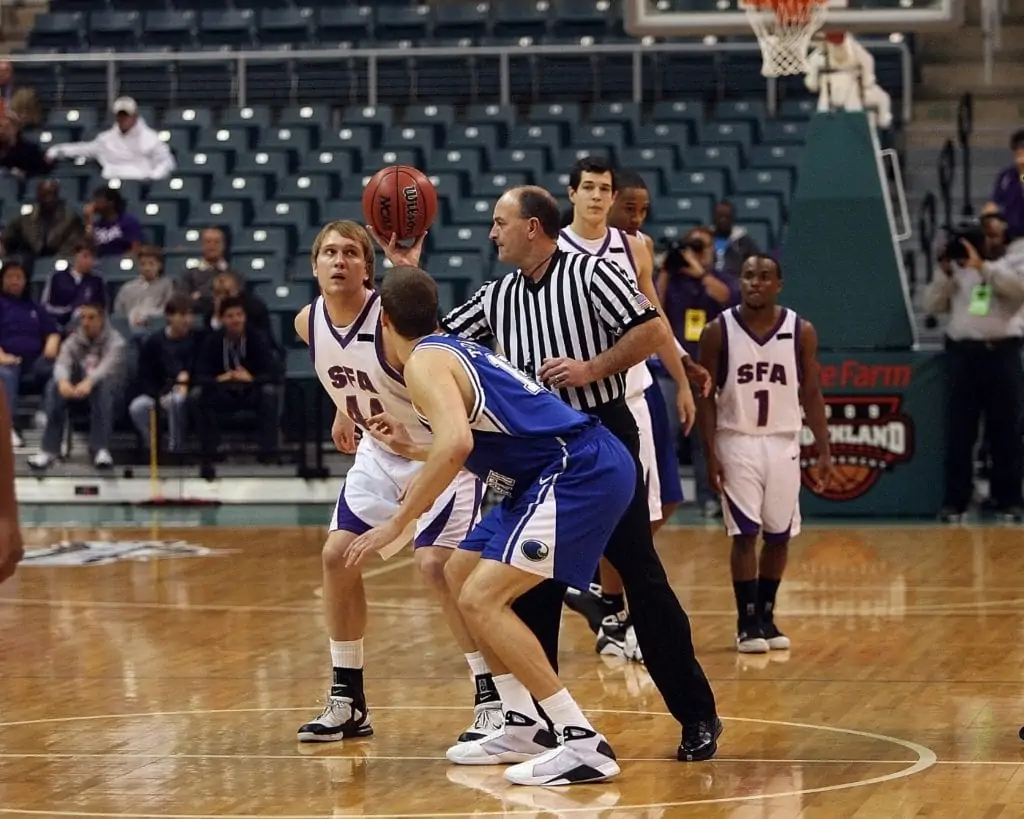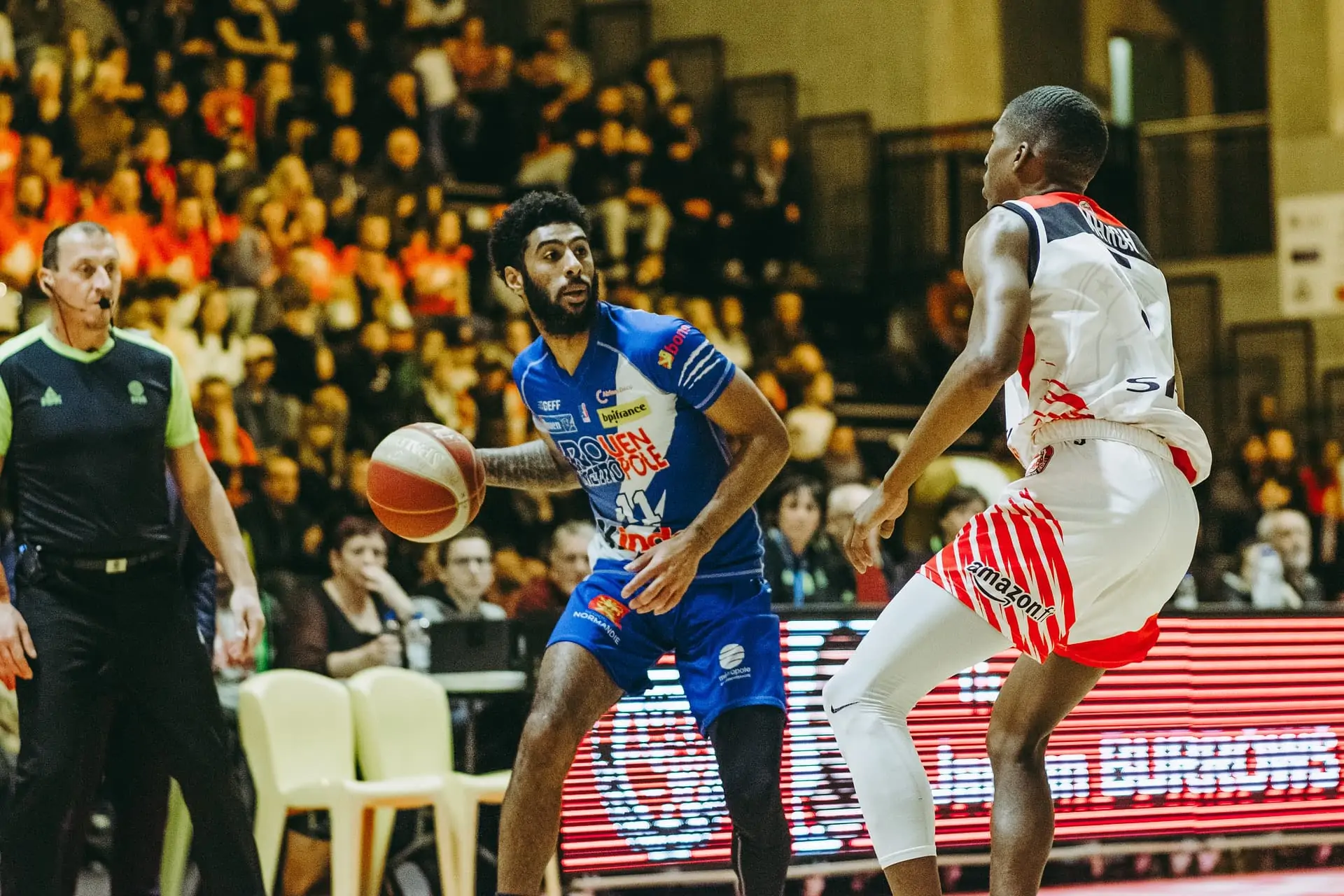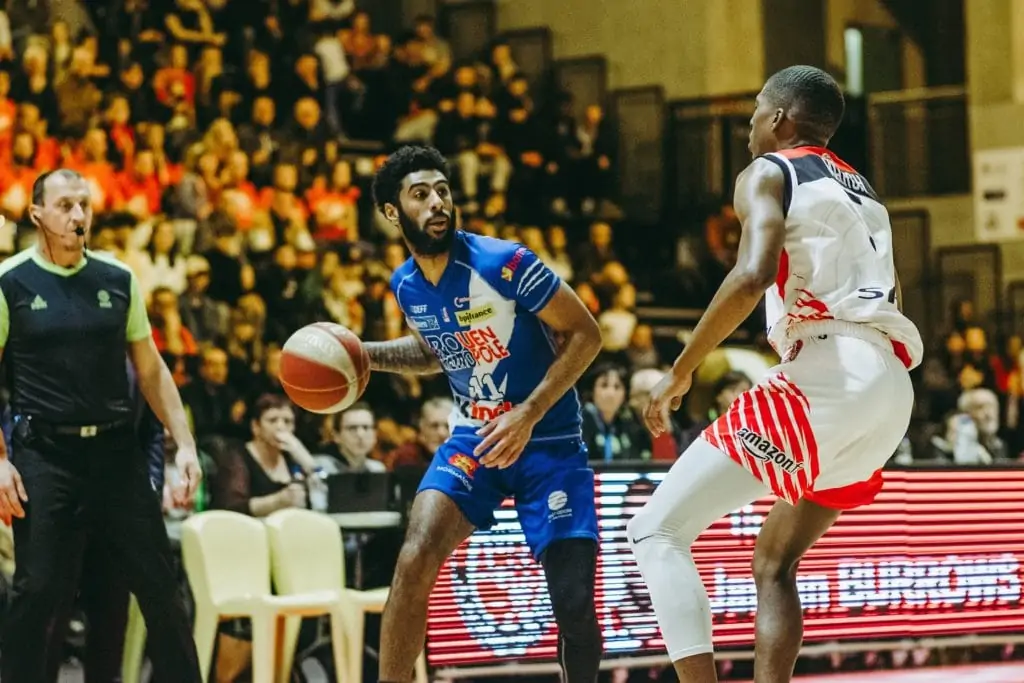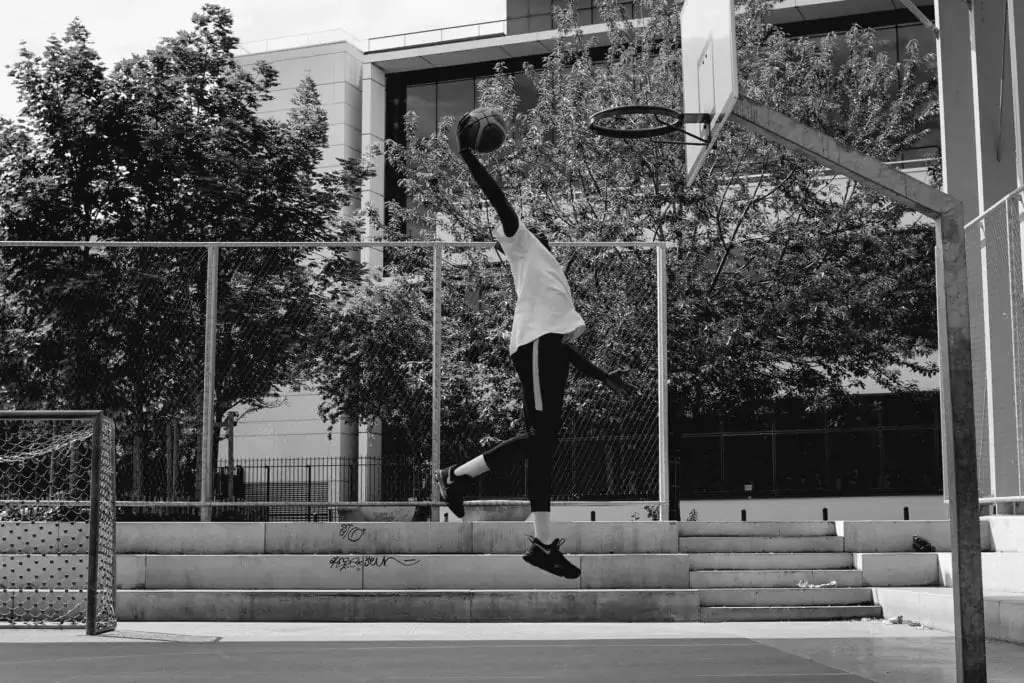Do you sometimes ask yourself, “What position should I play in basketball?” Do you sometimes find yourself analyzing your skills and wondering, “What basketball position am I suited for?” These are critical questions for players to get answers for.
Some people believe that position-less basketball is the best way to go. However, there are still people who say that different positions have different roles and responsibilities needed to have a functioning team.
We will be analyzing the various positions in basketball so you can get a proper answer to your questions. Let’s take an in-depth look into the requirements for each position and see if we can determine what position you are best suited for.
 First Things First: What are the Main Positions in Basketball?
First Things First: What are the Main Positions in Basketball?
There are five different positions in basketball. Each position usually has a different set of responsibilities on the court. Some players are capable of playing multiple positions while others only specialize in one. Depending on the playing style being fostered by the coach, some positions may be more utilized than others. Here are the five positions in basketball.
Point Guard
The point guard is usually the primary ball-handler on a basketball team. The point guard’s main responsibility is to facilitate the offense of the team by creating plays or orchestrating set plays. Ideally, good point guards are also great passers with foresight and the capability to create for the rest of the team and then make good passes to their teammates.
Some point guards are exceptionally good scorers. When teams have point guards that are great scorers, this is an extra weapon in the team’s arsenal that gives them extra versatility in their offense. Great point guards are also able to defend the perimeter efficiently because they may very likely be guarding good guards on the defensive end of the court.
Shooting Guard
A shooting guard is generally a perimeter player whose primary responsibility is to take and the make shots. There are different types of shooting guards that operate differently on the court. You have slashers, pure shooters, all-rounders, and rim attackers. Ideally, you would like your shooting guard to be able to make open shots very efficiently. Shooting guards that can double as point guards are also very sought-after. These guards can help take the pressure off your point guard at different stages of the game.
Small Forward
Small forwards are generally combo players with multiple skill sets that allow them to operate effectively in both the frontcourt and backcourt. Small forwards should be a combination of guards and the big man.
Small forwards are players that shoot the ball reasonably well, attack the rim, and have some kind of mid-range game. Small forwards that can play in the post have an added advantage over those that cannot.
You need your small forwarded to guard multiple positions on the defensive end of the court. Small forwards that can do this are very dangerous because they can play on both ends of the court.

Power forwards operate in the frontcourt on both ends of the court. In today’s game, more and more power forwards are extending their games out to the perimeter. This creates numerous advantages for the offense as it opens up the floor by pulling away defenders from the rim while at the same time making the power forward an extra option to make a shot.
Power forwards should be capable of helping on the boards and supporting the other big man in the frontcourt. Power forwards need to be strong enough so that they can defend the paint post positions. Power forwards also need to have good footwork so that they can maneuver properly on offense and defense.
Center
The center on most teams is the tallest player on that team. The reason behind this is because the center typically plays closest to the rim. Basketball is changing, so this concept is changing along with it.
We are also seeing where centers are expanding their games to the mid-range and the perimeter. You still have traditional centers that can dominate under the rim, but they are not as common as before. Even the most dominant centers in the NBA, such as Joel Embiid, Karl Anthony Towns, and others, are extending their offensive game.
Centers also need to be capable of protecting the rim, but most of them are not great shot-blockers.
 Do Positions Matter in Basketball?
Do Positions Matter in Basketball?
The answer to this question will vary from person to person. There are two most common answers. One would be that yes, they do matter because each position should play a particular role. The next reply will be that no, positions do not matter because players are developing different skill-sets as time progresses.
Our answer today is going to be a combination of both of those answers. Basketball is evolving where players are not being restricted as much as they once were in the past while they play. This is where position-less basketball comes in.
If players are capable of handling the responsibilities of other positions than there listed position, then yes, if they can help the team by doing this, they should be allowed to do so. As it relates to positions in basketball, there are some responsibilities that come with each position. These responsibilities are best carried out by certain players.
Even with that said, it depends more on the player than the name of the position. We believe that players should just play and contribute regardless of their position.
 What is the Easiest Position to Play in Basketball? Why?
What is the Easiest Position to Play in Basketball? Why?
This question is impossible to answer with one clear-cut the position. What is the easiest position to play in basketball? I can guarantee you that if you go to any basketball courts or gym and ask this question, you will get five different answers, at least.
But there are so many different ways to look at this question. It’s really impossible to settle on one answer. Some people will say that the shooting guard has the easiest job on the floor because all they need to do is catch and shoot. This may be true if you have a shooting guard that is a pure shooter that is tasked with the responsibility of standing in a corner and shoot the ball when they receive it.
But, ask yourself how many teams play in this way. You should also know that there are different types of shooting guards. You also have defensive specialist shooting guards that carry most of the defensive load on their team. With this in mind, we cannot say the shooting guard position has the least responsibility on the team.
Other people may say that power forwards, and centers have the easiest jobs because they are positioned close to the rim on offense and rarely create their own shots. We can say this is not the case because power forwards and centers have the longest distance to cover on a basketball court as they run baseline to baseline, and this can be quite taxing.
These guys may not create their own shots as often as other players do. However, they are often matched up against some of the strongest players in their leagues, so even a shot at the basket requires a tremendous amount of effort. What we can say is that the easiest position in basketball does not exist. It all depends on the playing style of a particular team.
Yes, there are some players on teams that do not carry the same responsibilities as others do but this may not be the same position on other teams.
 What is the Hardest Position in Basketball? Why?
What is the Hardest Position in Basketball? Why?
Some people will argue that the point guard position is the hardest position to play in basketball because of the offensive responsibilities that a point guard has. Yes, a point guard is primarily responsible for running the team’s offense, which is a tremendous role.
They can also add that the point guard is also required to guard the opposing team’s floor general or the opposing team’s sharpshooter. With the combination of work on offense and defense that the point guard is required to do, it can be looked at as the most challenging position on the basketball court.
Others may disagree with this and say that frontcourt players such as centers and power forwards, that are continually banging against each other, have the most challenging job on the court because of the physical demands of these positions.
Centers and power forwards are generally the biggest guys on a team, so it is logical that they play against the biggest guys on the opposing teams. These guys are also required to run baseline to baseline from offense to defense and vice versa. In addition to being active on offense, they are also expected, or should we say required to protect the paint from not only their frontcourt marks but also perimeter players penetrating towards the rim.
With all of this in mind, people can easily say that the big men have the most challenging jobs on the court. Some of us may even say that perimeter guys have the most difficult responsibilities, and this is the most challenging position to play because these guys bear the brunt of the scoring load for the team.
As you can see, just as before for the easiest position, there is no correct answer to this question. It all comes down to the individual teams and what each player is asked to do on these teams.
 What Position Dunks the Most?
What Position Dunks the Most?
Dunks are becoming must-see TV. They give us a sense of incredibleness when we watch or do them because no other sport has something that they can quite compare to dunks.
Understandably, you would like to know which position dunks the most so perhaps you can train to play in that position. The players that dunk the most don’t necessarily do so because of their position. As you may already know, anyone can dunk the ball at any opportunity. Dunking doesn’t depend on position but more on jumping ability and height. The positions with the most height tend to be the power forward, small forward, and center positions.
Because these guys are taller, it is a lot easier to get over the rim for those spectacular finishes. With that said, athletic guards are also capable of high-flying finishes. Most NBA dunk contest winners are guards.
Because of their height, strength and the fact that they play closer to the rim than guards, frontcourt players tend to dunk more in games.
 What Position Do Short Players Normally Play in Basketball?
What Position Do Short Players Normally Play in Basketball?
In basketball, players that are under 6’3″ are generally considered short. These players usually play the point guard position. You may find some short players but not a lot that plays the shooting guard position as well.
There are a few reasons why it is ideal for shorter players to play as guards. It is best for shorter players to play as point guards because they are not capable of handling the physical demands of other positions with players that are taller and have a longer reaches than they do.
It is quite easy to outplay shorter players at different positions because of their physical drawbacks. Point guards that are shorts generally tend to have good handles because their center of gravity is lower, and they are closer to the ground when they dribble.
The disadvantage of having a short guard is that some passes may be more difficult compared to the abilities of taller guards. There are a few shooting guards that are short, but to excel at this position, you must be good at a few things or excel at one specific thing. One of the most notable short shooting guard of recent times is Dwayne Wade.
 Which is the Best Position to Play in Basketball?
Which is the Best Position to Play in Basketball?
The best position to play is the position that you are most effective at. Whatever position allows you to be the best player that you can be is the best position in basketball.
Wrapping Things Up: What Position Should I Play in Basketball?
To determine the best position for you, assess your capabilities with and without the ball on offense. You can always do switches on defense. You need to identify what you can do best to help your team.
You should also measure your physique against the other guys you will be playing against. Until next time ballers.
Remember you are finding your position and not your playing style. Your size may determine what position you are listed for, but it should not define how you play. Do not limit yourself.
Did you find this helpful? Then also check out other basketball FAQ articles here.
> How Many Players are on a Basketball Team?
> What Position Did Michael Jordan Play?
> What is the Average Height of an NBA Player By Position?
> What is the Least Important Position in Basketball
Want to get better at basketball?
Join our newsletter & get our comprehensive
101-page basketball guide.
Become a better baller today 👇


 First Things First: What are the Main Positions in Basketball?
First Things First: What are the Main Positions in Basketball? Do Positions Matter in Basketball?
Do Positions Matter in Basketball? What is the Easiest Position to Play in Basketball? Why?
What is the Easiest Position to Play in Basketball? Why?
 What is the Hardest Position in Basketball? Why?
What is the Hardest Position in Basketball? Why? What Position Dunks the Most?
What Position Dunks the Most?
 What Position Do Short Players Normally Play in Basketball?
What Position Do Short Players Normally Play in Basketball? Which is the Best Position to Play in Basketball?
Which is the Best Position to Play in Basketball?

